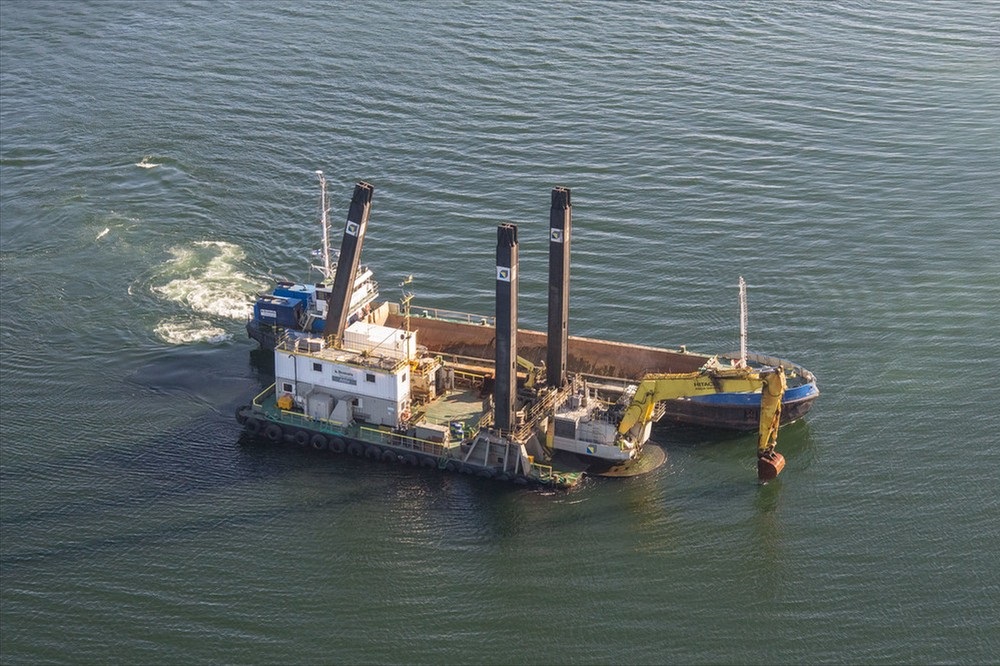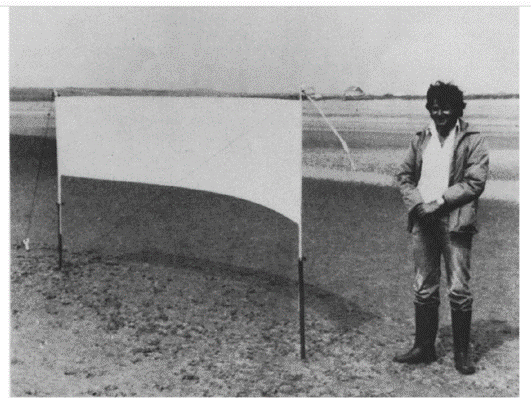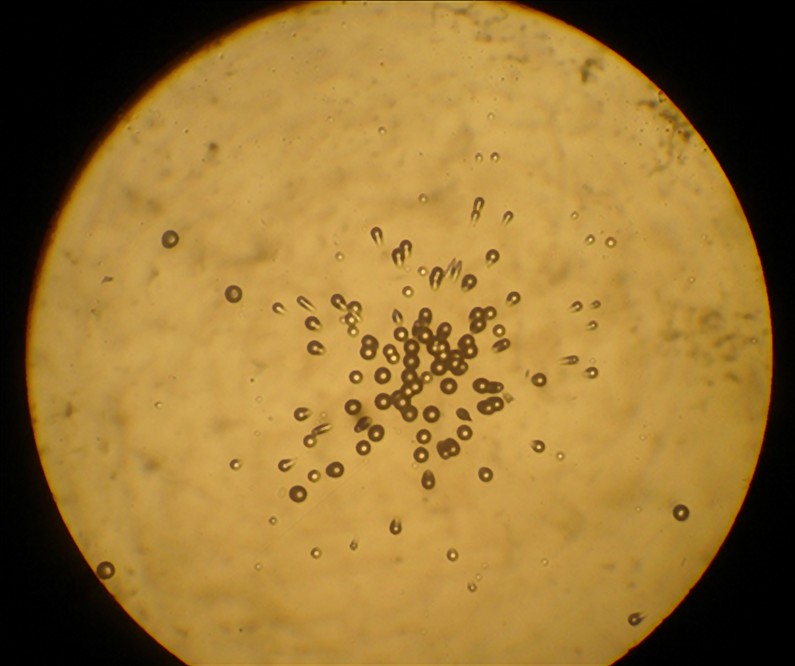A particular threat to health: Why it is vital to stop the dumping of mud from Hinkley Point C in the Severn Estuary

Richard Bramhall
In 2018 the French state-owned company Électricité de France (EDF) dug more than 100,000 tonnes of radioactively contaminated mud from the bed of the Severn near Hinkley Point. Ignoring widespread protests they dumped it back into the water less than two miles from Cardiff. This was to allow construction of huge inlets and outlets for water to cool the reactors in the new nuclear power station – Hinkley Point C – which EDF is building in Somerset.
EDF held an old licence for the 2018 dump but it expired before they could shift their target volume of nearly a million tonnes. They applied to renew the dumping at Cardiff but, because of strong opposition in Wales and more protective Welsh environment law, they switched to a site at Portishead near Bristol. This August the Marine Management Organisation granted a licence for the Portishead operation and dumping immediately began again. Campaigners on both sides of the estuary have now applied for a Judicial Review.
The legal challenge identifies many scientific and regulatory issues. This article concerns only one:- the health impact of radioactive particles in the mud. Every nuclear power station in the world vents dust particles. They are licensed to do this. Filters trap fragments bigger than about 5 microns (thousandths of a millimetre) but thousands of billions of smaller particles are released, as data published by the UN show. Particles this size are inhalable and are biologically very mobile.
The greatest proportion are made of uranium.
Many of the particles will have fallen into the sea, adding to fallout from atom- and hydrogen-bomb tests between 1953-62, from Chernobyl, and from other (now closed) nuclear power stations on the Severn. Nuclear industry research in the 1980s showed that breaking waves and white water resuspend the particles, and that they blow inland as far as the investigators were able to sample, which was 10 km. It must be assumed that they travel further than that.

It is not difficult to detect the particles with a plastic called CR-39 which is also routinely deployed to check whether the natural radioactive gas Radon is getting into buildings. The plastic detects alpha rays emitted by atoms in the particles. Alpha radiation is very destructive over the microscopic distance it can travel, so it is a health threat only when the particles are inside the body.

The CR-39 in this image was smeared with a very small random sample of dust from the engine air filter of a car that had been driven exclusively in the vicinity of Hinkley Point. Each of the round marks is a pit created by the impact of a single alpha track. The oval pits show the impact of tracks travelling diagonally. The clustering of pits shows the tracks came from a dust fragment; the size of the cluster shows this fragment was smaller than 5 microns.
The CR-39 technique can’t detect tracks travelling parallel to the plastic or away from it, just as a camera doesn’t show what’s behind it. But a particle embedded in body tissue affects cells lying in any direction up to a distance of 8 cell diameters. Within that small volume of cells, the dose from a single alpha track is about 200 times greater than the whole human body receives from natural background radiation in a year. The image shows only a small part of a piece of CR-39. The whole thing is the size of a microscope slide and it contained seven similar clusters. (The particles were inevitably lost in developing the image.)
Before the Senedd elections this year (2021) Petitions Committee asked Natural Resources Wales to respond to campaigners’ demands for the mud to be tested with CR-39. NRW refused without offering a scientifically valid explanation.
Contamination
The new umbrella group Tarian Hafren Severn Shield, which unites campaigns from both sides of the estuary, says Wales can take no comfort from the fact that EDF is dumping at Portishead instead of Cardiff where the 2018 dump was done. Tarian Hafren says the estuary’s known anti-clockwise circulation will spread contamination east as far as the new M4 bridge and then west along the south Wales coast.
In July the Japanese government extended health benefits to people who fell ill after the Hiroshima bomb although they were too far from the blast to receive any external radiation.
This news is highly relevant to Wales. For the first time a national government has gone against official claims that radiation from fallout cannot cause any detectable health effects. The Hiroshima bomb was made of uranium. The Black Rain which fell widely across the region was black with uranium particles. People inhaled and ingested them. This, though more extreme, is the same kind of exposure as the people of south Wales are now facing long-term. It is vital to stop the dumping.
Richard Bramhall is Company secretary of the Low Level Radiation Campaign. He was a member of the 2001-2004 San Steffan government scientific advisory Committee CERRIE (Committee Examining Radiation Risks of Internal Emitters) and has been involved in many dialogues with the nuclear industry and its regulators.
Support our Nation today
For the price of a cup of coffee a month you can help us create an independent, not-for-profit, national news service for the people of Wales, by the people of Wales.






When we hear Welsh Labour constantly proclaiming how they stand up for Wales, then happily agree to the dumping of English irradiated mud from Hinkley Point Nuclear facility begs this question answered. Why? Why dump any mud from a site in England in Wales. We didn’t dump our coal waste in England.
And even if the mud is safe, which I doubt it is, the very act of willingly being England’s waste tip is a national slight done by the very ones who say they fight for Wales where in reality they choose to blight.
It is odd that there is only silence on here from those who live on the south coast…
Since this was published, someone on Twitter challenged me over the UN data. Here’s the link http://www.unscear.org/docs/publications/2000/UNSCEAR_2000_Annex-C-CORR.pdf. The data for particles is in Table 34, starting on p 260 (108 in the pdf e-file numbering) “Particulates released from reactors in airborne effluents”. These would be licensed releases. Eight years data 1990 – 1997. We can’t find any reports after 1997. The data in UNSCEAR are given in Becquerels (Bq – units of radioactivity) so it’s axiomatically radioactive, not house dust although as we know some of it ends up as house dust. Most of must be uranium. Accidents are in… Read more »
Can the type C design be so readily compared with this historic data from much earlier designs? Some reactors in the table are well over 60 years old. I wouldn’t want to compare the pollution from 1960 design photocell production to what we are doing now.
Well I can’t comment on that. My concern is the health effects of radioactivity and especially the massive discrepancy between official risk estimates and real-world observations of genetic effects in populations exposed to uranium particles. Can we invent a source of nuclear power that doesn’t emit them?
The fact is that the mud being dumped HAS radioactive particles in it and it’s BAD for human health.
As for the Type C reactor being better or worse is moot; we’re talking about actual radiation IN the mud being sloshed around the Bristol Channel.
There are very few of these reactors and at least two have problems and are shut down!
We must NOT make more waste for future generations to clean up; it’s the same thinking that has bequeathed a polluted, degraded and possibly collapsing environment upon our descendants!!:(
The problem you have is that officially this level of radioactivity does not harm human health and it is far below the level of radiation proscribed by law. OK, that is two problems, firstly you have to change the scientific evidence proving harm levels and secondly change the law to reflect those lower levels. I am inclined to be anti-nuclear but if you are going to make reasoned scientific arguments for stopping the dumping then you need to get past what the Senedd was told in 2018. The radiation dose found by CEFAS (testing agency) is said to be, “the… Read more »
CEFAS was making an averaging error well rehearsed by pro-nuclear interests. Natural background radiation can, generally, be regarded as an average across the whole body. As illustrated in the report above, the radiation from uranium particles can not be regarded as an average. Believing otherwise is like letting a gunman into a school because you believe the dose of energy from his bullets will be shared by every person in the city.
The Svetlana Alexievich “Voices from Chernobyl” is really something. Okay, there are some very good physicists around, but one gets that “playing mud pies” -feeling after reading the somewhat bizzare happenings that occured, and probably still are.
Of course, it’s much safer mud here in westworld. Yeah, right.
If it’s safe the Thames estuary would be ideal. If it was a resource it would be there already except for the waste which would be dumped in Wales.
Labour and Plaid really need to jump on the nuclear mud issue and the raw sewage issue. Otherwise, I am going to start voting green.